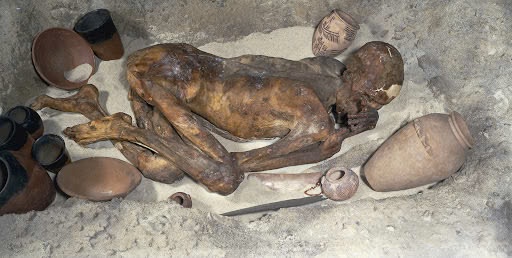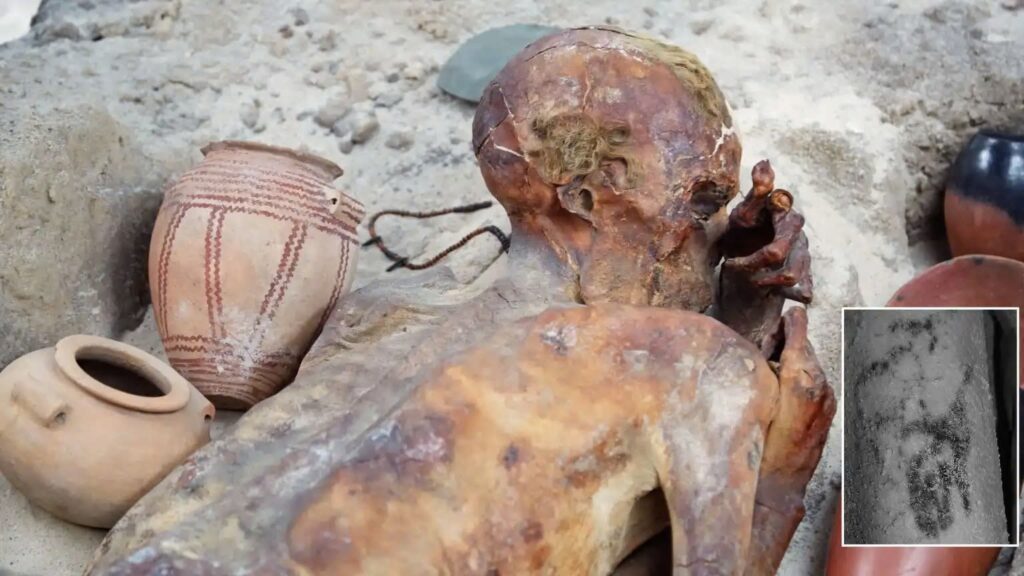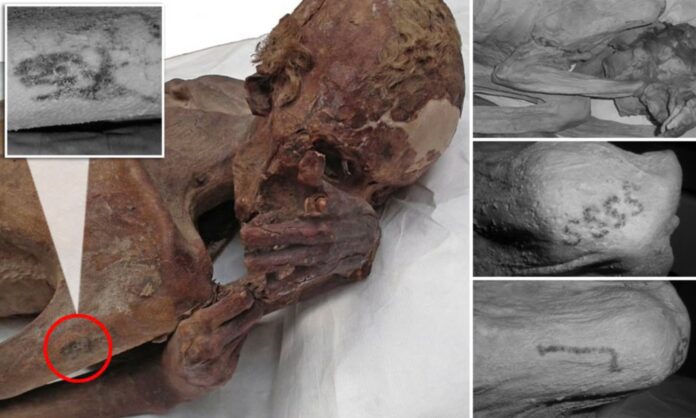A Glimpse into Pre-Dynastic Egypt
The Discovery of “Ginger”

In the sands of Gebelein, a site 25 miles south of Thebes in modern-day Egypt, archaeologists unearthed a remarkable find – the naturally mummified body of a young man dating back to around 3400 B.C. Nicknamed “Ginger” due to his reddish hair, this Pre-Dynastic mummy, officially known as the Gebelein Man, has been a source of fascination for researchers and history enthusiasts alike.
Natural Mummification in Ancient Egypt

Unlike the elaborate mummification practices of later Dynastic periods, the Gebelein Man was preserved by the arid desert environment. Buried in an oval pit grave in a fetal position, his body provides valuable insights into early Egyptian burial customs that would later influence the famous mummification techniques of the Pharaohs.
Modern Technology Unravels Ancient Mysteries
CT Scans Reveal a Tragic Tale

The British Museum, custodian of the Gebelein Man, sent the mummy for CT scans at London’s Bupa Cromwell Hospital. The results painted a grim picture of the young man’s fate. Aged between 18 and 21 at the time of his death, the Gebelein Man met a violent end. X-rays revealed a fatal stab wound in his back, shattering his left shoulder blade and ribs – evidence of a brutal murder that occurred over five millennia ago.
Infrared Technology Unveils Ancient Art

But the most groundbreaking discovery came through infrared technology. The scans revealed tattoos on the Gebelein Man’s upper right arm, depicting a bull and a Barbary sheep. This finding, along with similar discoveries on a female mummy from the same site, establishes the Gebelein mummies as the oldest known humans with figurative tattoos, predated only by Ötzi the Iceman’s linear markings.
Rewriting History: Tattoos in Ancient Egypt
Challenging Previous Assumptions

Prior to this discovery, tattoos in ancient Egypt were thought to be primarily a feminine practice. The Gebelein Man’s tattoos challenge this notion, providing evidence that men in Pre-Dynastic Egypt also engaged in this form of body art. This revelation adds a new dimension to our understanding of early Egyptian culture and society.
The Power of Modern Archaeological Techniques
The story of the Gebelein Man highlights the invaluable role of modern technology in archaeology. What appeared to the naked eye as mere smudges on ancient skin have been revealed as intricate designs, opening new avenues for research into ancient practices and cultural norms.

As we continue to apply cutting-edge technology to archaeological finds, who knows what other secrets from the distant past we might uncover? The Gebelein Man stands as a testament to the enduring mysteries of ancient Egypt and the power of modern science to illuminate them.

